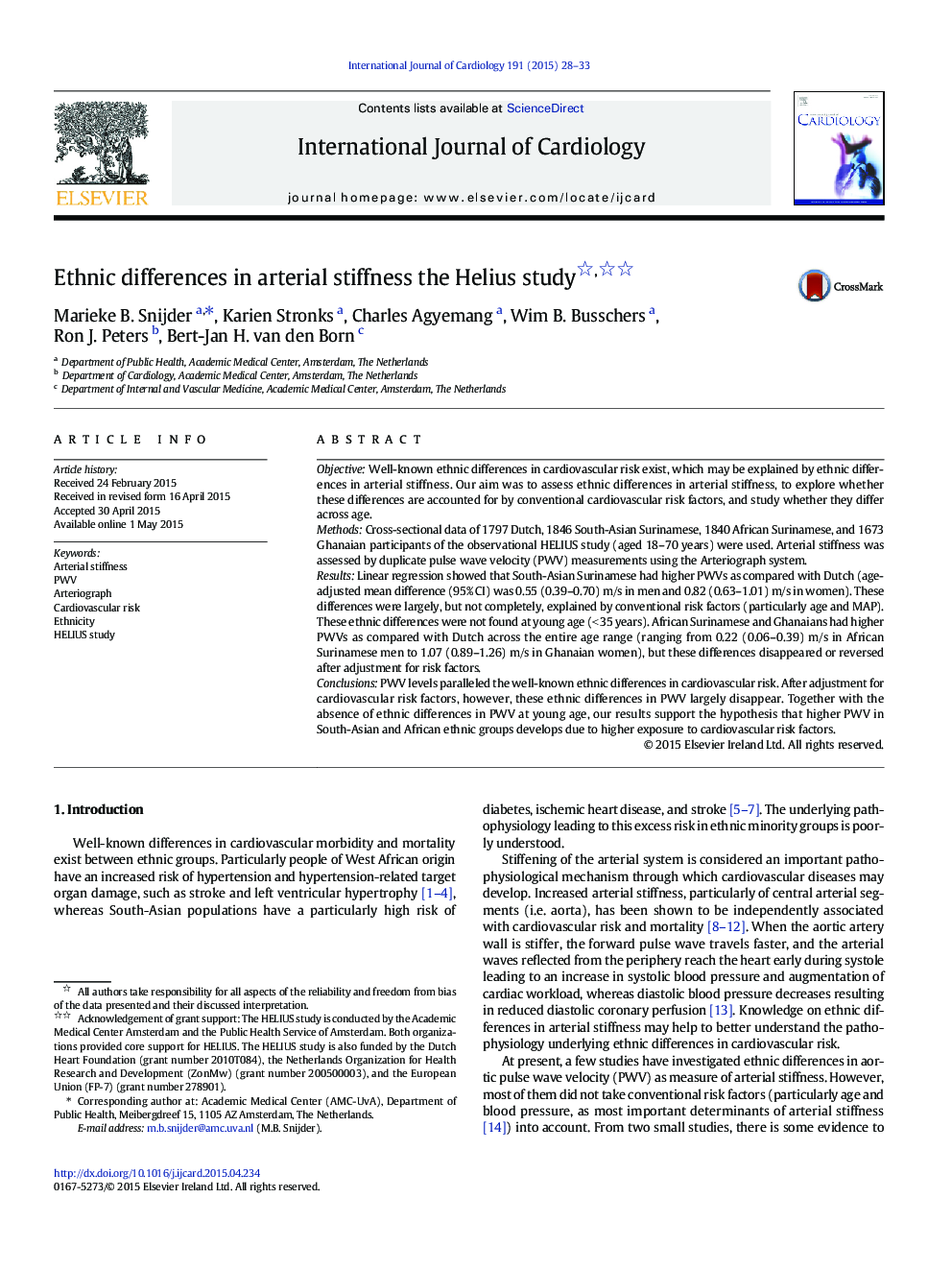| کد مقاله | کد نشریه | سال انتشار | مقاله انگلیسی | نسخه تمام متن |
|---|---|---|---|---|
| 5966814 | 1576161 | 2015 | 6 صفحه PDF | دانلود رایگان |

ObjectiveWell-known ethnic differences in cardiovascular risk exist, which may be explained by ethnic differences in arterial stiffness. Our aim was to assess ethnic differences in arterial stiffness, to explore whether these differences are accounted for by conventional cardiovascular risk factors, and study whether they differ across age.MethodsCross-sectional data of 1797 Dutch, 1846 South-Asian Surinamese, 1840 African Surinamese, and 1673 Ghanaian participants of the observational HELIUS study (aged 18-70Â years) were used. Arterial stiffness was assessed by duplicate pulse wave velocity (PWV) measurements using the Arteriograph system.ResultsLinear regression showed that South-Asian Surinamese had higher PWVs as compared with Dutch (age-adjusted mean difference (95% CI) was 0.55 (0.39-0.70) m/s in men and 0.82 (0.63-1.01) m/s in women). These differences were largely, but not completely, explained by conventional risk factors (particularly age and MAP). These ethnic differences were not found at young age (<Â 35Â years). African Surinamese and Ghanaians had higher PWVs as compared with Dutch across the entire age range (ranging from 0.22 (0.06-0.39) m/s in African Surinamese men to 1.07 (0.89-1.26) m/s in Ghanaian women), but these differences disappeared or reversed after adjustment for risk factors.ConclusionsPWV levels paralleled the well-known ethnic differences in cardiovascular risk. After adjustment for cardiovascular risk factors, however, these ethnic differences in PWV largely disappear. Together with the absence of ethnic differences in PWV at young age, our results support the hypothesis that higher PWV in South-Asian and African ethnic groups develops due to higher exposure to cardiovascular risk factors.
Journal: International Journal of Cardiology - Volume 191, 15 July 2015, Pages 28-33